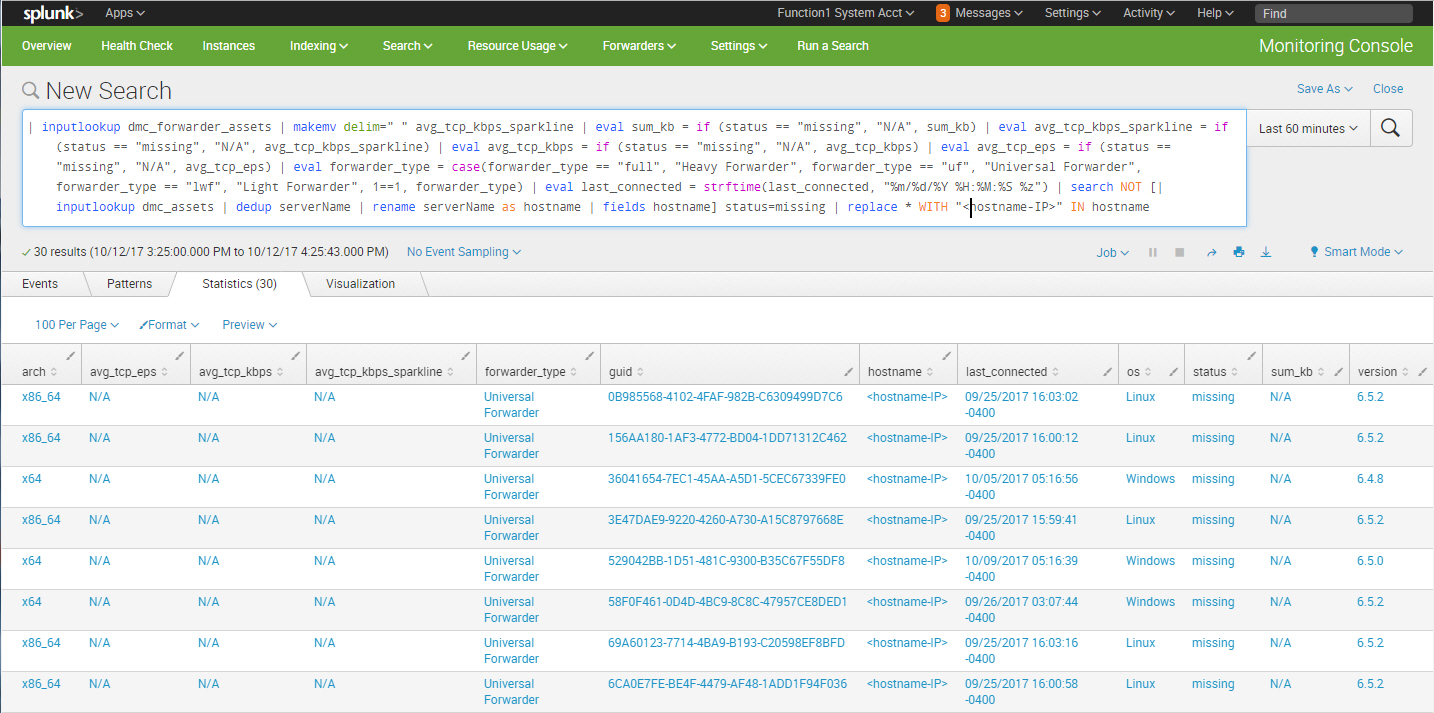

The command creates a new field in every event and places the aggregation in that field. Not so helpful logging examples marklar*: undefined. The eventstats command looks for events that contain the field that you want to use to generate the aggregation. A search like this: stats count (User) by ComputerName, User. Web logs | savedsearch marklar | search /diagnostic Use the order by clause in the from command to sort the events by time in ascending order, the. | eval _time=if(isnotnull(new_time), new_time, _time) The count of number of characters of each values of the method field are assigned to the LENGTH. | append [search dialOutToCouncilMember:ok Last week marklar*: dialOutToCouncilMember:ok | stats count, sum(rounded_len) AS MB by app | rex field=_raw " (east|west|asia|europe) (?+):" | rex field=rest "consultationParticipantId='(?+)'"ĭial out times marklar: checkForClient='true' | rex field=_raw "differenceInMinutes='(?+)'" | stats count by diffĭialOutTimes (filtered) marklar: | rex field=_raw "differenceInMinutes='(?+)'" | search diff +)'"įigure out log size in MB of apps on starphleet (host=east OR host=asia OR host=europe) earliest=-6h latest=now Refining the search | savedsearch marklar Using the search in the web ui | savedsearch marklar | regex _raw="^.* (east|asia|europe|jobs) *marklar*:" As status is a single-value field so it will return 1 every time as a result.Creating a basic saved search sourcetype=syslog (host=east OR host=europe OR host=asia OR host=jobs) marklar At last we have used mvcount function to compute the count of values in status field and store the result in a new field called New_Field.

By table command we have taken the values of status field in a tabular format and by the dedup command we have removes duplicate values from the result set. In the above query status is an existing field in _internal index and sourcetype name is splunkd_ui_access. As you can see in image in status field 6 values are coming so the result will show 6 in New_Field.
I've tried the old standby,, as well as html, but that is interpreted literally. At last we have used mvcount function to compute the count of values in status field and store the result in a new field called New_Field. mysearch eval pmvjoin(myMvField,'
Now status field becomes a multi-value field. Im using the sort command in Splunk 7.3.0 to sort the search results for a table by. Using values function with stats command we have created a multi-value field. This eval expression uses the pi and pow. For circles A and B, the radii are radiusa and radiusb, respectively. eval sumofareas pi () pow (radiusa, 2) + pi () pow (radiusb, 2) The area of circle is r2, where r is the radius. In the above query status is an existing field in _internal index and sourcetype name is s plunkd_ui_access. Use the eval command to define a field that is the sum of the areas of two circles, A and B.
If X is a multi-value field, it returns the count of all values within the field. I am trying to get the Date (altering time in a specific format shown below), number of events (which I am using stats count to count the number of occurrences of 'EXAMPLE' and renaming as Transactions), and the sum of a value from different events (which I have to trim USD and quotes in order to make it register as a number).So argument may be any multi-value field or any single value field. The first clause uses the count () function to count the Web access events that contain the method field value GET.This function takes single argument ( X ).


 0 kommentar(er)
0 kommentar(er)
